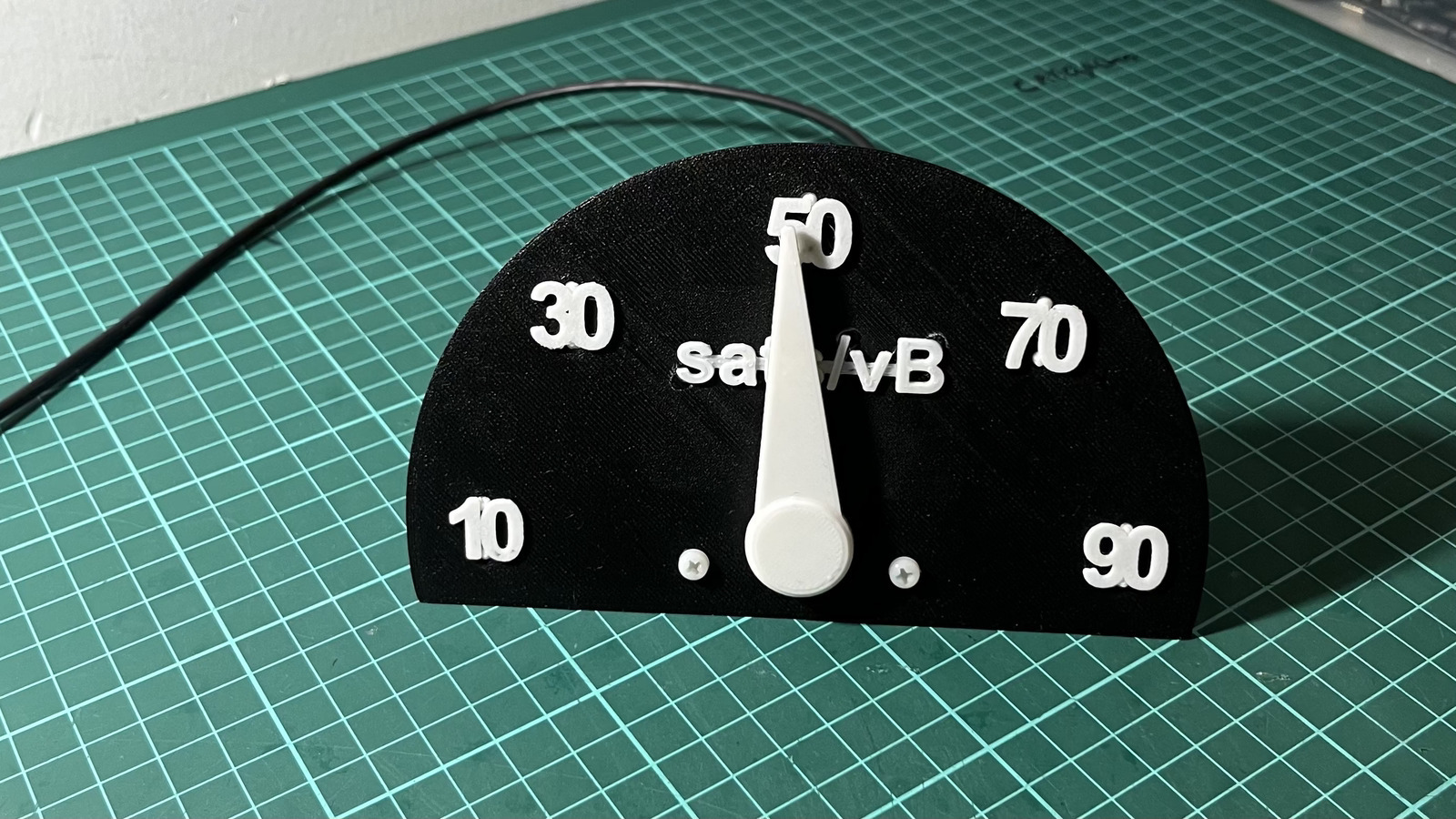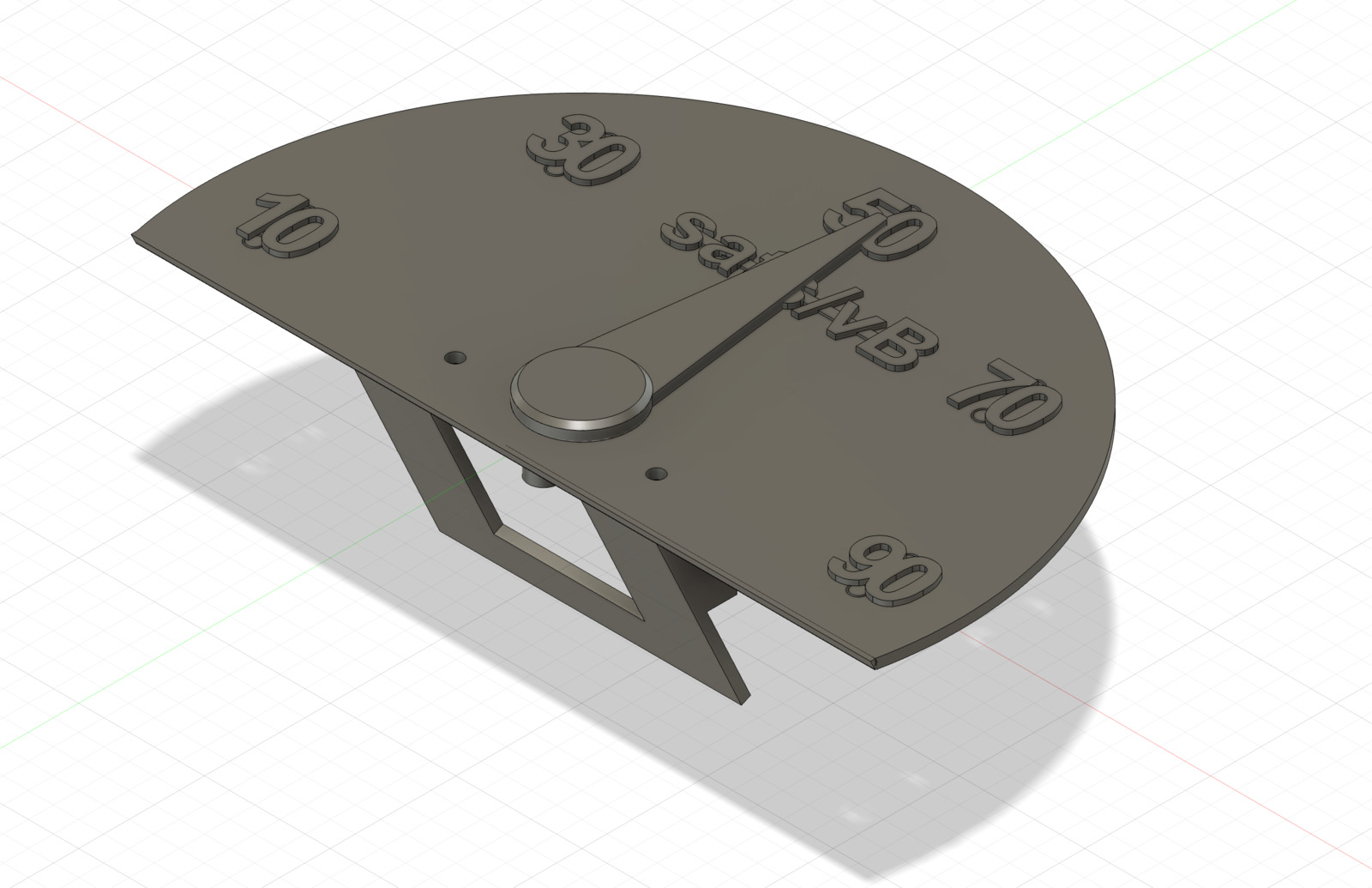A Bitcoin Mempool gauge indicator
06 Jun 2023
In the world of cryptocurrencies, the rising popularity of BRC-20 tokens on the Bitcoin blockchain has led to a surge in mempool fees. This has caused challenges for wallets using submarine swaps and users looking for fast and cost-effective transactions. To simplify this process, I came up with the idea of developing a “Mempool Load Indicator” that visually displays the next-block fee in sats/vByte using a gauge. The implementation was straightforward, utilizing a micro servo and an ESP8266.

Initially, I encountered a minor setback with the servo I purchased. It failed to achieve the full 180-degree rotation as promised. However, I discovered a solution within the Servo library, using additional parameters to adjust the servo’s performance. By experimenting with the values, I managed to achieve a satisfactory 180-degree sweep.
s1.attach(5, 370, 2400);
To gather the necessary data, I utilized the mempool’s.space API, specifically the fastestFee value, which indicates the fee required for inclusion in the next block. The ArduinoJSON library proved invaluable in parsing JSON data from the internet, simplifying the processing steps, and handling any potential errors.

I encountered a couple of challenges during the project. Firstly, I had to reverse the servo’s motion to align it with the desired operation. Secondly, I wanted to limit the maximum fee displayed on the gauge. I successfully addressed both challenges using the map() function.
int angle = map(fee, 1, 90, 180, 0);
In the future, I plan to introduce a revised version of the gauge that incorporates a logarithmic scale. This enhancement will allow the gauge to display higher values while maintaining the same size. By replacing the existing gauge numbers, a logarithmic scale can be easily implemented.
If you’re interested in this project, you can find the full code and 3D-printed model parts on GitHub!

